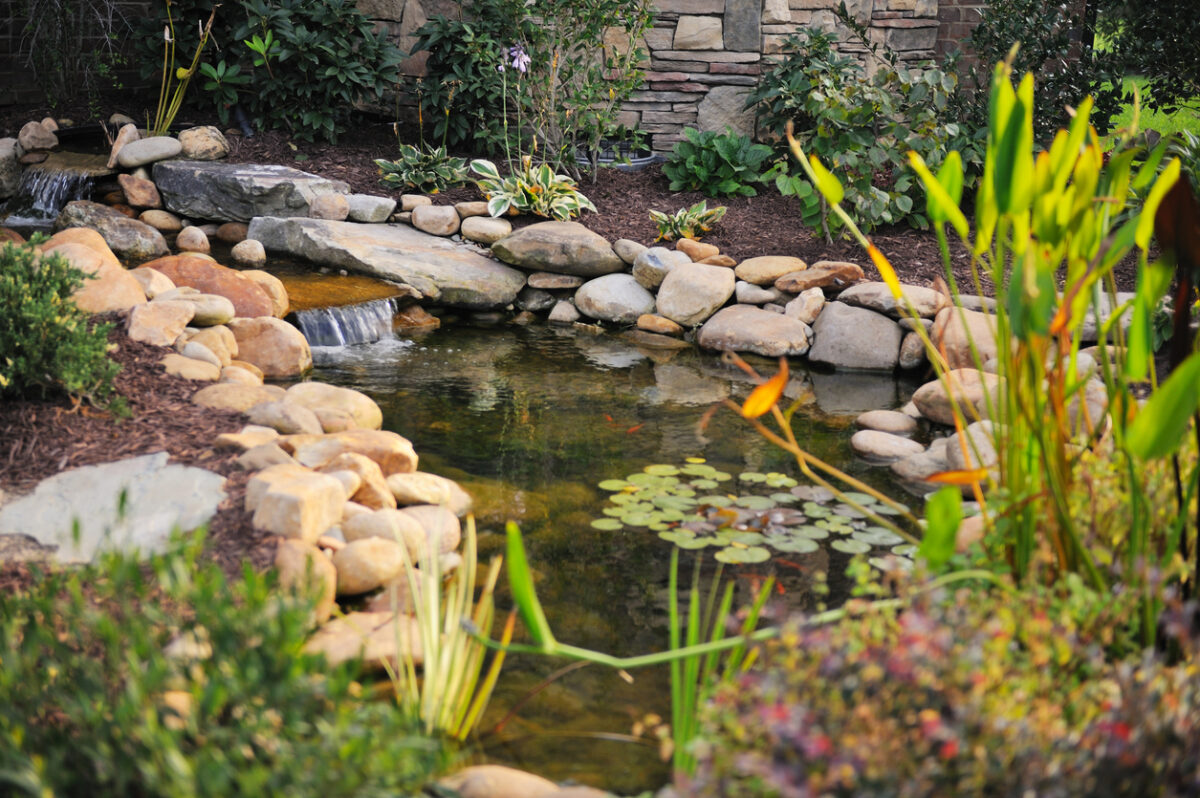

We may earn revenue from the products available on this page and participate in affiliate programs. Learn More ›
Backyard water features enhance the beauty and tranquility of a landscape, making a yard more visually interesting and relaxing. To bring life and color to your aquascape, however, it’s important to incorporate pond plants. They provide drama and texture as well as other benefits, including natural pond filtration, improved water clarity, algae control, oxygenation, and—if you have fish in your pond—shelter from predators. Growing pond plants helps create a balanced ecosystem, and you won’t have to change your pond water as frequently.
These are the four types of pond plants:
- Submerged plants, such as pond weed, live underwater and have roots that sit in the soil at the bottom of the water.
- Floating plants have foliage that floats on the surface of the water and roots that either float or sit in the soil at the bottom. These include water lilies, lotus, duckweed, and water hyacinth.
- Emergent plants, like rushes, arrowhead, and cattails, root in submerged soil but live above water.
- Shoreline plants, such as blue flag iris, grow on dry land but can tolerate being moist and seasonally flooded.
Most submerged and floating plants are pond-specific and will probably have to be purchased from a pond supply store. Meanwhile, many emergent and shoreline plants (also known as bog plants) are sold inexpensively at plant nurseries.
When you build your pond, be sure to create a shelf for bog plants. These oxygenators remove nitrogen, ammonia, nitrates, and other minerals from ponds, preventing algae growth. They also provide shade, shelter, and a safe place for frogs to lay eggs.
RELATED: 3 Surefire Ways to Attract Dragonflies to Your Yard for Natural Mosquito Control
1. Siberian iris (Iris sibirica)

These hydrophilic (or water-loving) irises are semiaquatic and grow best when water covers their crown all year. Just like other irises, they bloom in spring to early summer, with colors such as white, purple, blue, lavender, red, and yellow. These resilient plants have strap-like leaves and grow 12 to 40 inches tall, in full sun or partial shade, and they can provide shade for other marginal water plants. Largely pest-free, they return year after year.
Other varieties, such as Japanese iris, work well as bog plants in shallow water but must be removed for the winter because they can’t tolerate year-round submersion.
2. Calla lily (Zantedeschia aethiopica)

More closely related to philodendron, caladiums, and peace lilies, the elegant calla lily isn’t even a lily at all. “Calla” is simply the Greek word for beautiful—and beautiful it is, with its simple, graceful curves. The colorful, trumpet-shaped “flower” is actually a modified leaf. Available in white, pink, red, purple, and yellow, the striking plant features sword-like leaves, sometimes spotted with white.
This African tropical is hardy in USDA Zones 8 through 10, but the rhizomes can be pulled and stored through winter in colder climates. Because they like wet feet, they are an excellent marginal plant for a shallow bog or a pond’s edge.
3. Umbrella Palm (Cyperus alternifolius)
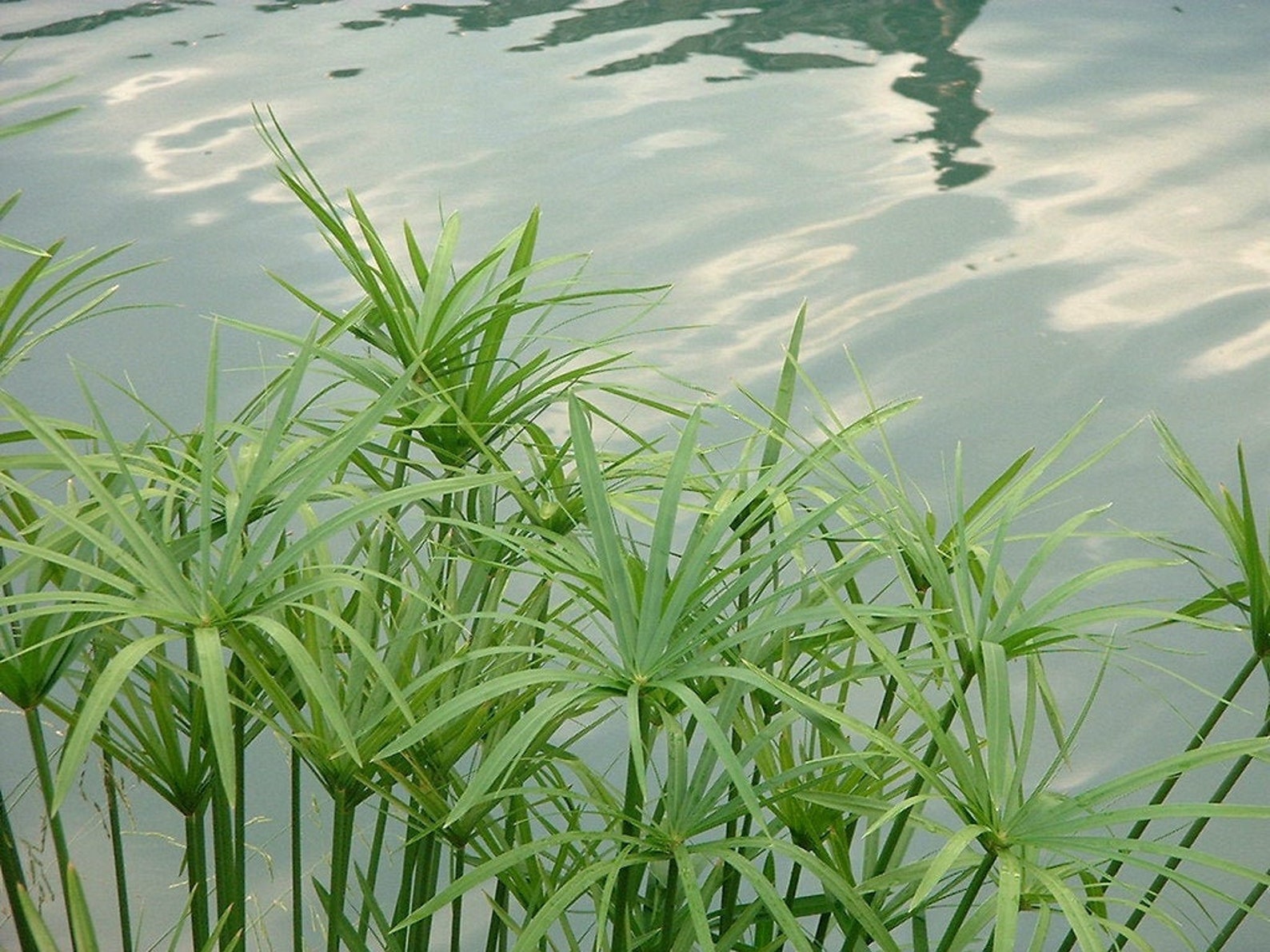
This ornamental grass has eye-catching bracts at the top of 4- to 6-foot stalks reminiscent of an open umbrella, giving the plant its name. While it prefers full sun, the umbrella palm can tolerate partial shade. As a tropical plant, it is hardy in Zones 7 through 11, but it can be treated as a summer annual in northern climes or wintered indoors. A fast and vigorous grower, umbrella palm can become invasive if left unchecked. Growing it in a planter can help restrain its spread, and it benefits from periodic root trimming or division.
4. Elephant ear (Colocasia esculenta)
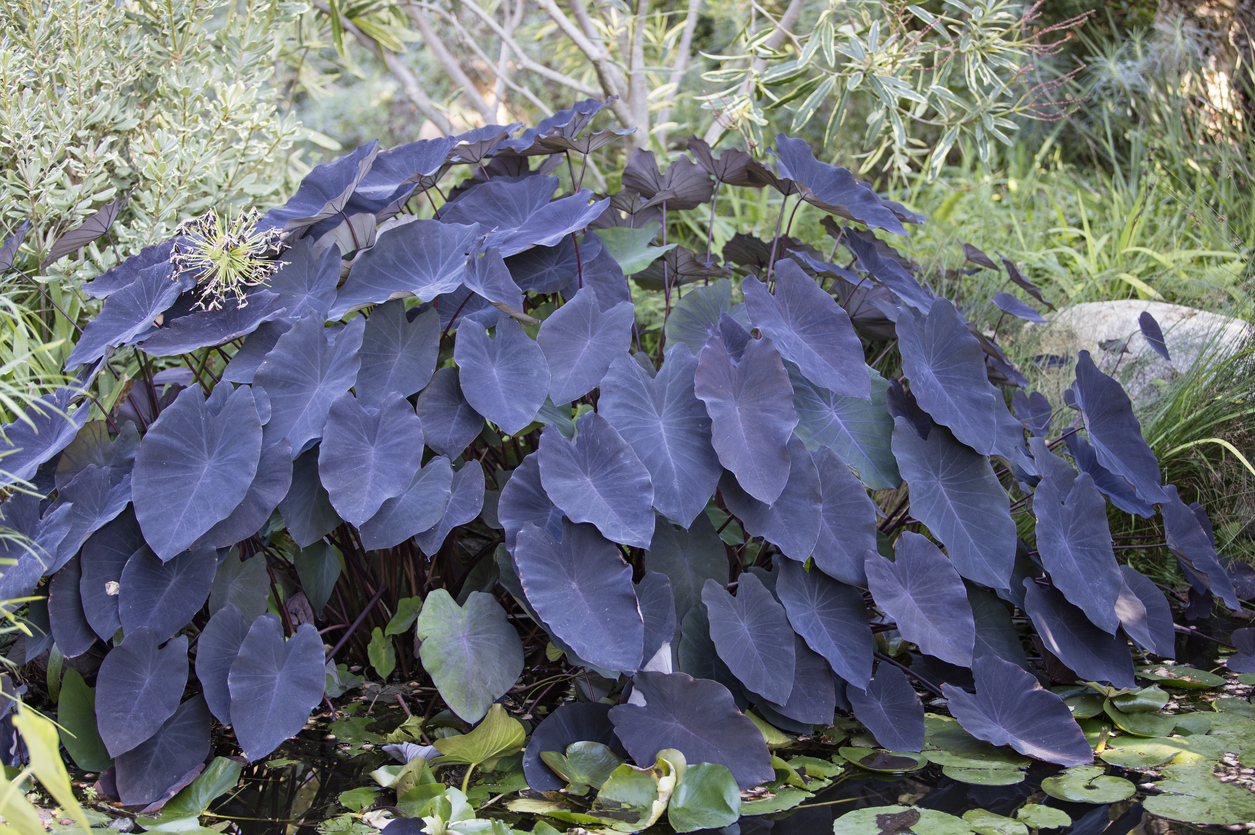
Taro, or elephant ear (not to be confused with alocasia, which is also commonly called elephant ear), is a semitropical plant that grows from a tuber so massive that it looks like a giant bulb. Its equally large leaves help set a tropical vibe in the garden or pond. Most commonly green, elephant ears can also be dark purple, brown, chartreuse, or variegated.
These plants require a lot of space, growing 3 to 8 feet tall and nearly 6 feet wide. Heavy feeders that like full sun and a lot of water, they are good candidates for ponds, although their crowns should be kept above water level. Hardy in Zones 9 through 11, elephant ears are grown as annuals in northern regions.
5. Canna lily (Cannaceae)
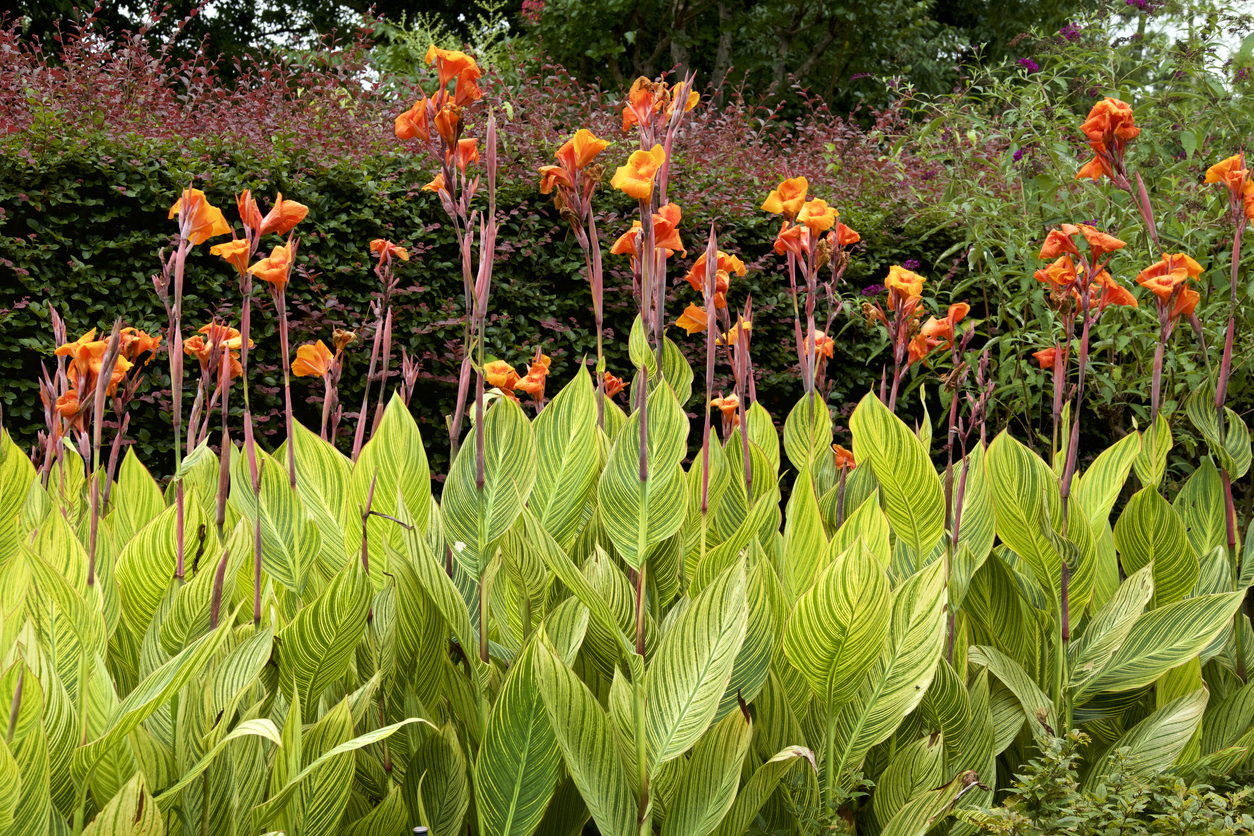
Most varieties of canna lily take well to pond life. Their rhizomes can be completely submerged, but for water gardens in northern growing zones, it’s easiest to plant them in baskets for fall removal and storage.
Growing 3 to 8 feet tall, canna lilies are majestic, tropical-looking plants with brightly colored flowers of red, orange, yellow, pink, or salmon on sturdy stalks. Popular canna lily varieties for ponds include:
- Canna ‘Tropicanna’, which features red-and-green-striped leaves and orange flowers
- Canna ‘Cleopatra’, which has green foliage with either yellow, red, or red-spotted yellow flowers
- Canna glauca, a native to marshy, swampy areas that features pale yellow gladiolus-type flowers
RELATED: How Much Does It Cost to Build a Pond?
6. Sweet flag (Acorus calamus)
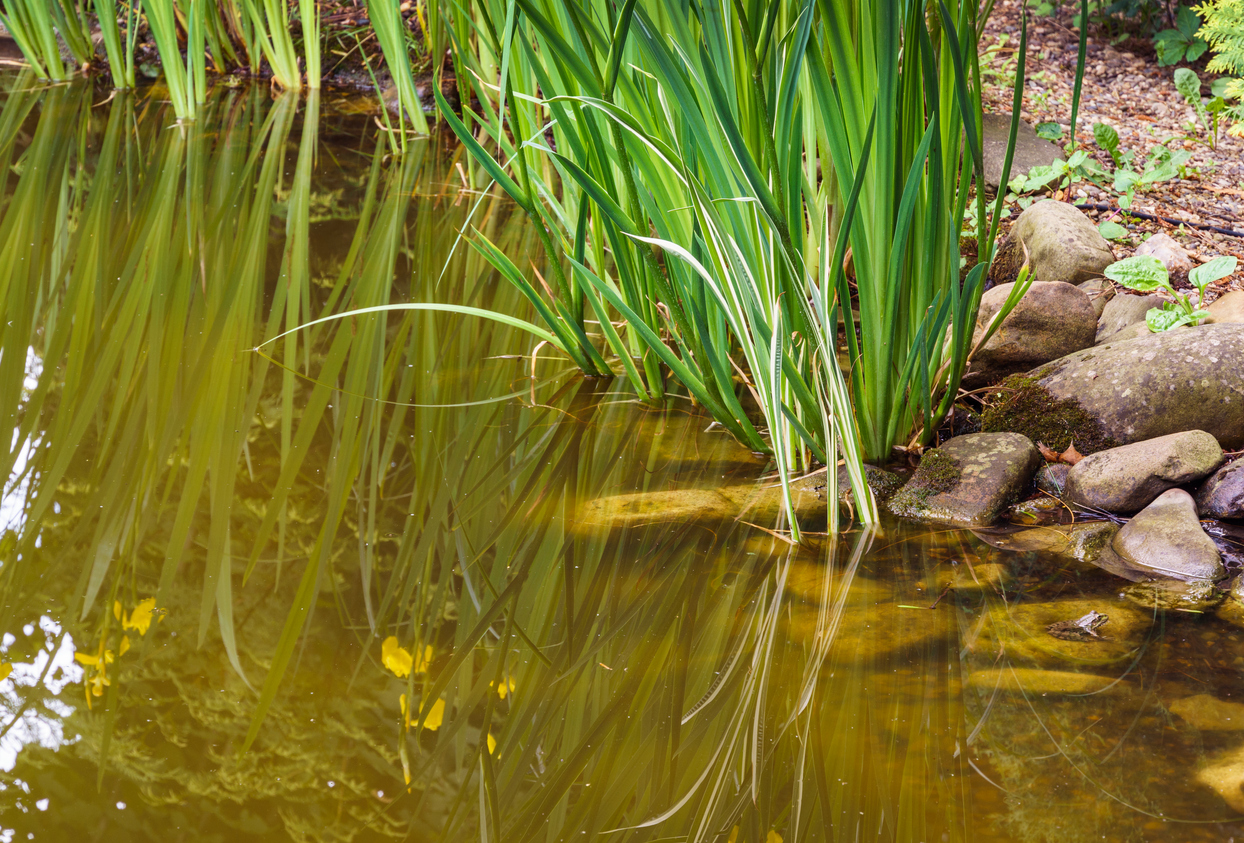
This perennial grass with bright green foliage grows 24 to 30 inches tall and is ideally suited for bogs because it prefers wet feet. Essentially disease- and pest-free, sweet flag is incredibly low-maintenance. Although it is not considered invasive, it does spread, and it’s propagated by dividing rhizomes. Sweet flag’s crushed foliage has a pleasant fragrance, earning it the name.
In the spring, the plant produces fingerlike flowers of greenish yellow that give way to red berries, adding a pop of color to a water garden. It likes full sun to partial shade (afternoon shade in hot climates) and is hardy in Zones 6 through 9.
7. Horsetail (Equisetum hyemale)

For extra visual interest in your pond, try horsetail , which is also called scouring rush for its rough-textured bristles. Taller and thinner than other ornamental grasses, it reaches heights of 2 to 5 feet and has narrow, banded green stems that give it an appearance similar to bamboo. It adapts to full sun or partial shade and can be planted in up to 4 inches of water, making it suitable for shallow bogs.
A nonflowering evergreen, this perennial is native to North America. Nevertheless, it can be invasive in certain conditions, so it’s best grown in pots. It reproduces through spores and underground rhizomes, spreading quickly. Note: This fast-growing plant can be toxic to grazing animals.
8. Cattail (Typha latifolia)
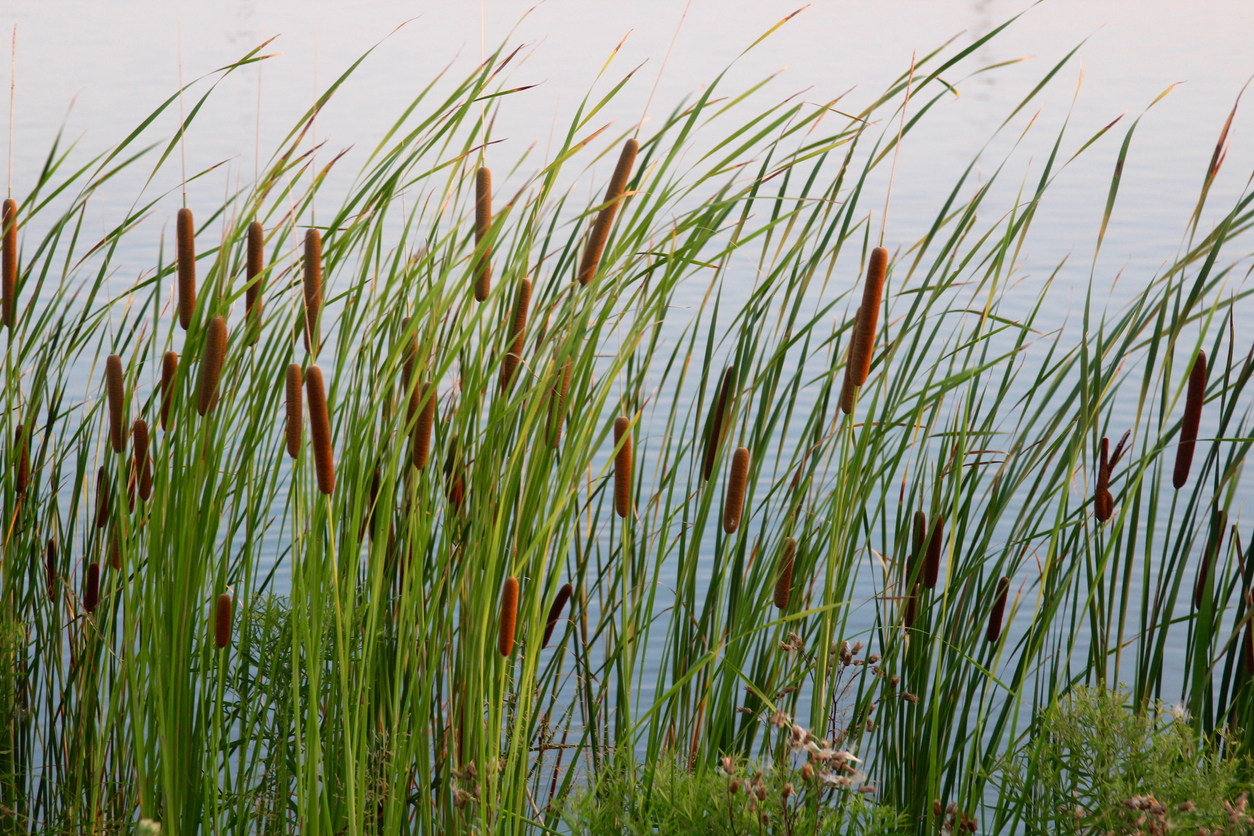
Cattail (aka bulrush) is better suited to large natural ponds because of its enormous size, growing up to 10 feet tall. It has a fast rate of spreading once its brown cylindrical flowers, or “cattails,” burst, and it also self-propagates via creeping rhizomes. Once established, these robust pond plants provide valuable shelter for wildlife, including the mosquito-eating dragonfly, which likes to lay eggs in them.
Hardy in Zones 3 through 10, this attractive plant with long, slender, tapering leaves prefers full sun and humid conditions.
9. Asparagus fern (Asparagus densiflorus ‘Sprengeri’)
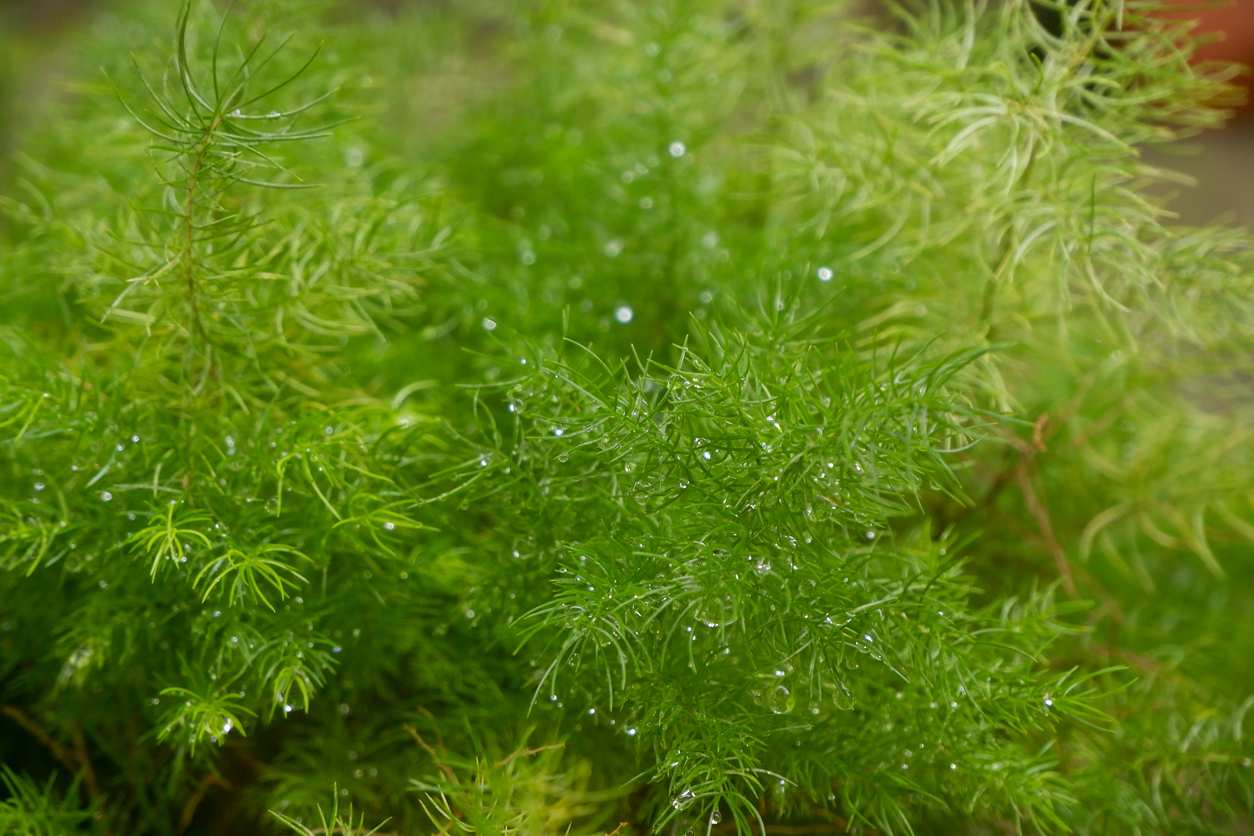
Neither asparagus nor fern, this popular houseplant is actually a member of the lily family. It adapts easily to pond life because it’s a voracious drinker. Its airy, draping fronds with soft needlelike leaves add softness to the waterscape. Hardy in Zones 9 through 11, it can be an invasive plant.
Asparagus fern likes to live along the edges of a pond or in a waterfall. To get one started in your pond, wash all the soil off its roots and tuck them under a rock for support. As the plant matures, it can produce small white flowers, red berries, and thorns. Note that this plant—particularly the berries—can be toxic to animals.
10. Impatiens (Impatiens walleriana)
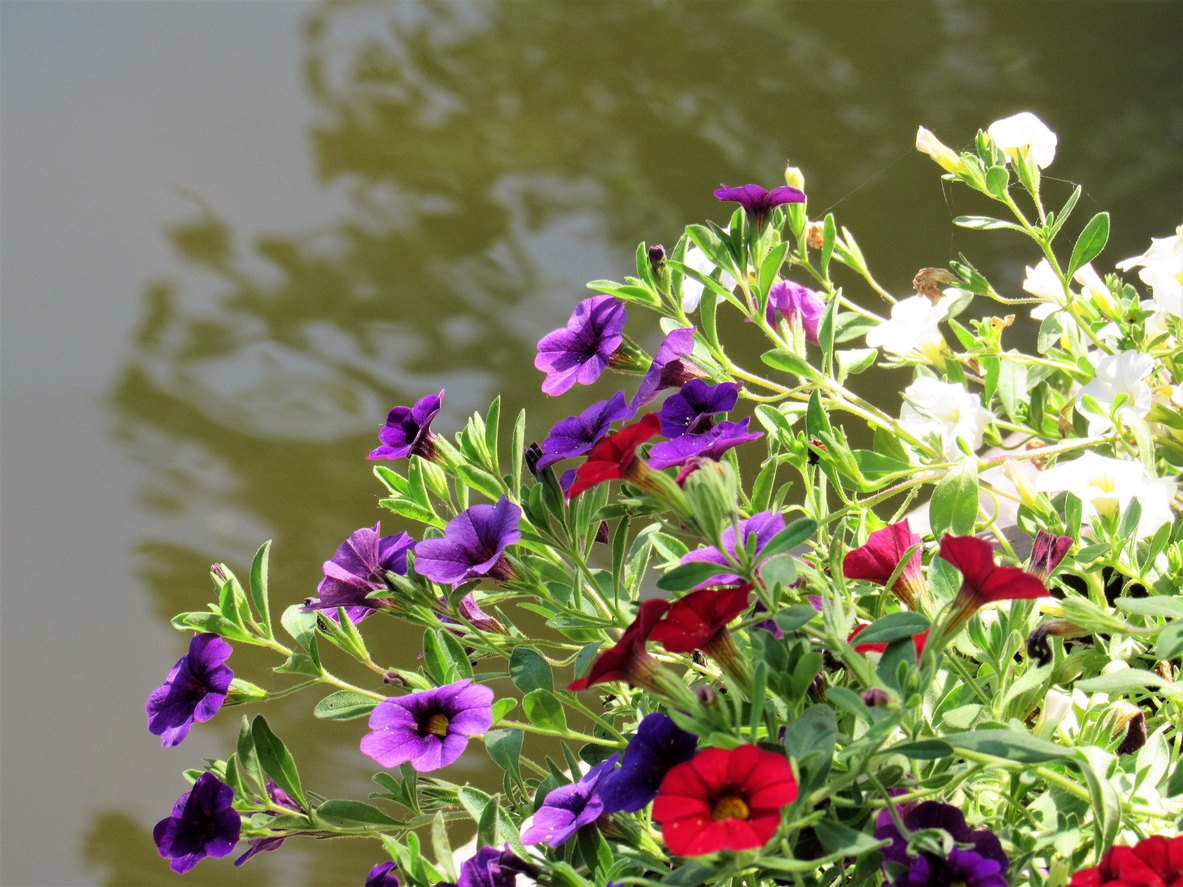
Add color to your pond’s waterfall or edge by planting impatiens. Although it typically doesn’t like wet feet, this annual also doesn’t like to be dry, so careful placement near your pond can keep it happy while adding a floral focal point to your pond. Impatiens flowers can be white, pink, red, violet, purple, coral, and yellow, and these low-growing plants (up to 12 inches tall) spread to create a lush pondscape.
Hardy in Zones 10 to 11, impatiens are sensitive to weather, wilting in too much heat or dryness and dying back in the cold. When planted along a pond’s edge, this shade-loving flower can tolerate a bit more sun than usual.
